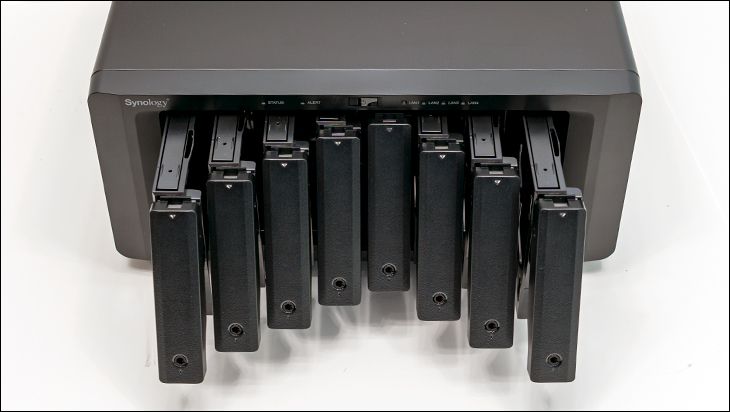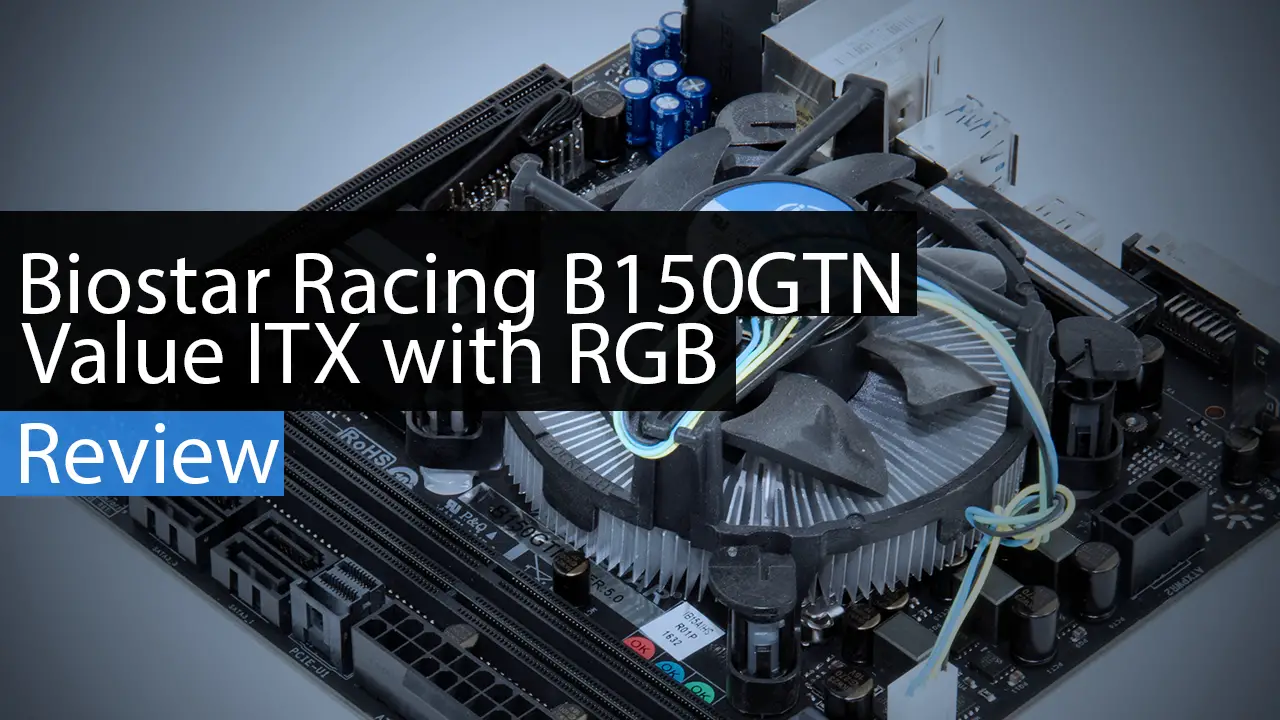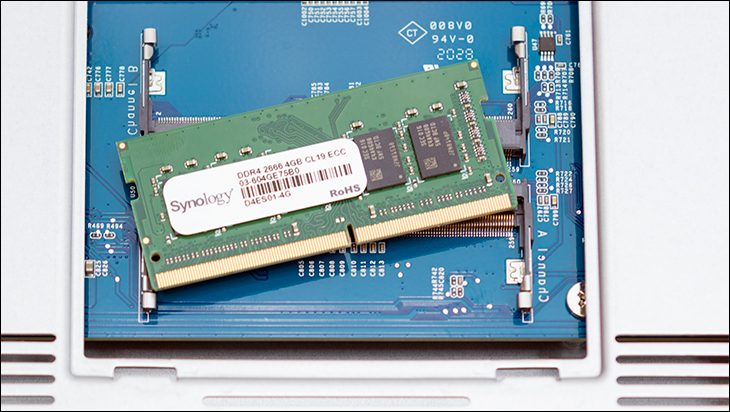
Like most things in life Your Mileage May Vary. Only you know the particulars of your needs, wants, and desires. As such the following sections are simply our thoughts/musings on what we personally would do and when we would do it. Do not take anything as gospel as while we will do our best to lay out our thought process only you know your home networking storage needs, your home network configuration, and most importantly of all… your budget.
With that caveat taken care of let’s start with the most obvious upgrade path: the RAM. In many ways the inclusion of only 4GB of ECC RAM is the largest potential bottleneck of the DS1821+. For basic, read low queue depth and ‘light usage’ in network-based file storage and retrieval scenarios, it is enough. This will be especially true for average home networks which are only capable of 1GbE connectivity and where one or at most two users will be accessing the system at any time.
This however is an IT Enthusiast and entry level S/MB orientated NAS appliance. Both groups will, on average, find the 4GB to be limiting and a noticeable bottleneck in performance on larger than 1GbE networks. Some of this is because the AMD V1500B is a dual memory channel CPU that will only have one DIMM populated, some of it will be because 4GB may indeed be enough for the DSM ‘OS’ to work while leaving over 3GB (overhead for the DSM at idle is about 600MB) of room left over for caching duties but the underlying reason does not matter. It will be the largest bottleneck… especially if you have all bays populated with high performance HDDs in RAID 5/6/SHR1/SHR2/etc. Thankfully it is also the easiest bottleneck to remove.
The most obvious solution is to purchase a second 4GB Synology branded stick of ECC and double the RAM. We actually would recommend not doing so. While 8GB is pretty decent, we would instead recommend thinking about purchasing two 8GB sticks or two 16GB sticks. Most will find 16GB plenty, others will need the fully 32GB Monty to be satisfied. It really will come down to case-by-case basis on which is ‘best’.
Synology themselves offer rebranded Samsung ECC RAM sticks for sale (to be precise, the Samsung rebranded Synology D4ES01 4GB and 8GB RAM sticks are using K4A4G085WE-BCTD RAM ICs). One stick of 4GB will set you back about 90USD. One stick of 8GB will set you back about 200 USD. Luckily, you have plenty of options as Synology does not make RAM. They purchase from other manufactures, batch test to ensure they meet their specs and then rebrand them as Synology RAM… so if you do not feel like paying the premium for guaranteed to work ECC RAM you do have options. Though these options will not be on the QVL for the DS1821Plus. Only three options are listed, at the time of this review, and all three are Synology branded (D4E models) – 4GB, 8GB, and 16GB.
While it is indeed true that theoretically any Dual Rank (as Synology is hit or miss with Single Rank sticks) DDR4 ECC Unbuffered SO-DIMM 260pin 1.2V ram will work… the reality is a bit more nuanced. On POST Synology NAS’s does indeed check the RAM (amongst other things) and if it is not ‘official’ RAM it will pop-up a nag screen. Every. Time. You. Reboot. Your. NAS (and log into DSM). For examples of this ‘phenomena’ Kingston Server Premier (e.g. KSM26SED8/16HD) will nag you. But will work with no other problems beyond being nagged. However, in some instances, especially “brave” souls who use non-ECC RAM (though we are unsure why you want to do this… beyond saving a few bucks on the upgrade), the NAS appliance may not even POST with unofficial RAM installed and Synology tech support will not help you until you remove the offending sticks and reinstall the original RAM.
SAMSUNG are the most obvious and ‘safest’ choice as the D4ES01 series is Samsung ECC RAM. They however may prove to be the hardest to source choice as Synology D4ES01 series are based on the EOL’ed Samsung B-die RAM ICs. We personally would not get hung up on 512MB K4A4G’s ICs used as quite honestly 1GB K4A8G085WB-BCTD’s IC can basically be used interchangeably with 512MB K4A4G085WE-BCTD based IC’s… making your life a teeny tiny be easier (and if you source via business orientated sales departments it will be even easier). So Sammy M474A2K43BB1-CTD is also a decent choice.
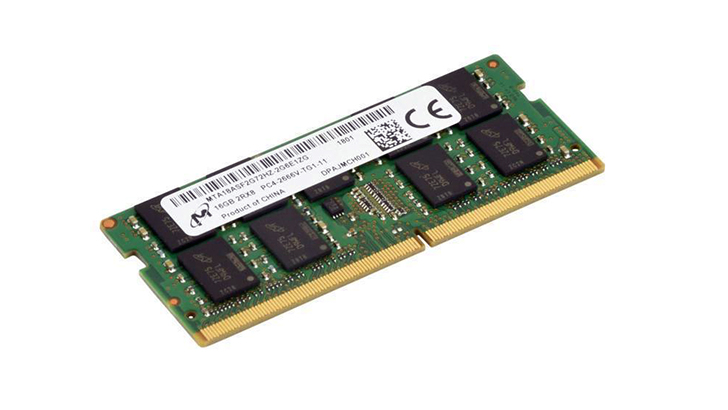
With all that said. Our personal recommendation and ‘go to’ option, based on decades of experience, is Micron/Crucial ECC RAM. In certain business circles there is an old saying (and one we have used many times) “Samsung for Speed, Micron for reliability”. If Crucial or Micron say it will work in X system or with X motherboard… it will work. First time. Every time. Right now, that means 16GB DDR4-2666 CL19 MTA18ASF2G72HZ-2G6E1 (https://www.crucial.com/memory/server-ddr4/mta18asf2g72hz-2g6e1).
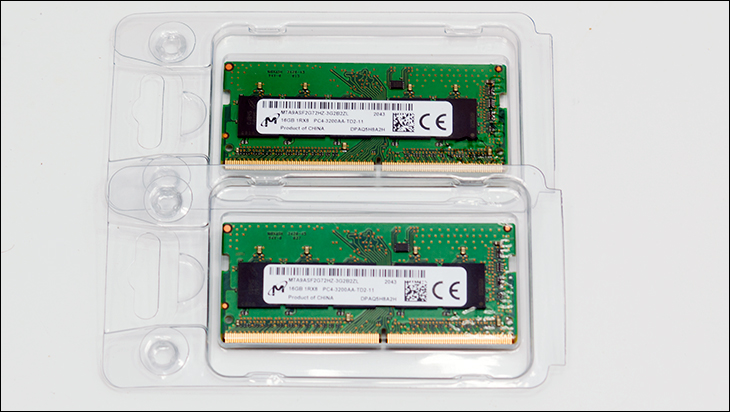
The sticking point is that is actually old RAM and is hard to find. In talks with Micron, they recommend MTA18ASF2G72HZ-2G6E4 which is the newer version of that particular set of RAM. The other option, and the one we used is MTA9ASF2G72HZ-3G2B2ZL. Yes, this is DDR4-3200 ECC but beyond a speed bump (which this NAS cannot make use of) it is good kit. In testing we used all three and opted for the MTA9ASF2G72HZ-3G2B2ZL as ‘why not’. We can confirm that these sticks will give you zero issues, and no nag screen. Plus, they are extremely easy to find via typical e-tailer and retailer options.
The other very nice thing about this particular RAM is simple. They not only work perfect, they will only set you back about $100-150 (USD) per stick (depending on particular kit and retail vs. not retail… with business contacts netting you a better price). Put another way you can go from 4GB to 32GB for not much more than what one 8GB stick of Synology branded ECC RAM will set you back. The choice is yours. Just understand the full implications and do a risk vs. reward cost benefit analysis on any RAM you are thinking about before you buy.
